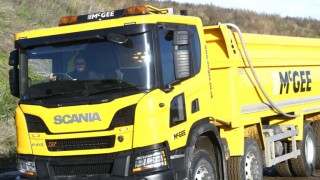Other lorry safety measures
Direct vision cabs keep cyclists and pedestrians safe by increasing the volume of space which can be seen in front and to the nearside of an HGV.
There are however many other additional measures, technological and physical, which can increase safety for cyclists and pedestrians.
New ideas continue to emerge. Some examples are listed below, many of which are part of the Safe System within TfL's HGV Safety Permit which will be required for zero star lorries to be used on London's roads from October 2020.
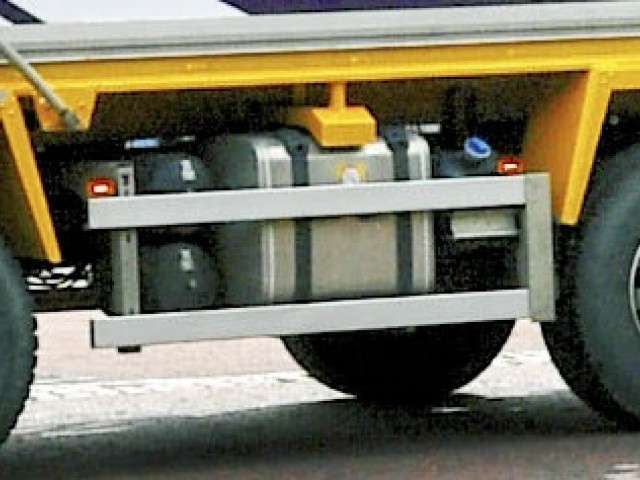
Side under-run protection
Side under-run protection is designed to minimise the physical impact of a collision by deflecting people and preventing them going under the sides of a vehicle, by filling wide gaps between vehicle axles.
It is a requirement under FORS and TfL's HGV Safety Permit.
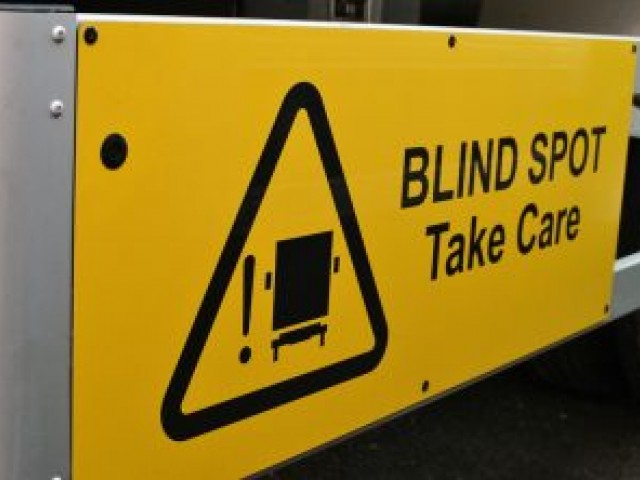
Warning signage
TfL advises that signage should not be offensive and should be a warning rather than giving instructional advice to the people walking and cycling. Signage is typically displayed to the rear and near side of a vehicle, often as part of the side under-run protection.
Blind spot warning signage on the rear of a vehicle is a requirement under FORS and TfL's HGV Safety Permit.
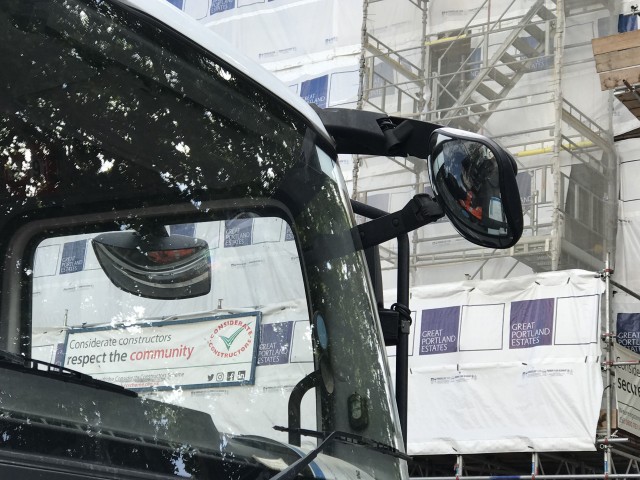
'Blind Spot' Class V and VI mirrors
A Class V mirror gives a driver of view of the space on the nearside of the vehicle immediately adjacent to the door. Most of this space is not directly visible from a standard lorry cab.
A Class VI mirror gives a driver a view of the space immediately in front of the vehicle. Most of this space is not directly visible from a standard lorry cab. This enables the driver to see a cyclist, pedestrian or motorbike that is moving or stationary who is in front of the vehicle but cannot be seen directly.
Both are a requirement under FORS and TfL's HGV Safety Permit for direct vison and standard cabs.
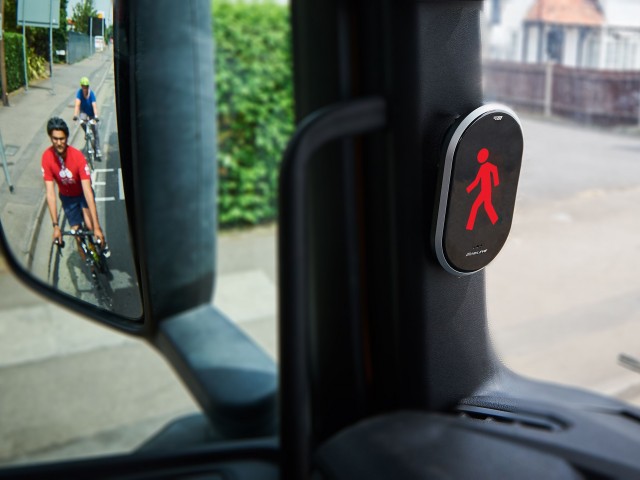
Close proximity sensors
These provide a visual and/or audible alert to the driver of the presence of a person walking or cycling typically in close proximity to the nearside or front of the vehicle.
TfL's HGV Safety Permit requires coverage of six metres down the nearside or one metre from the rear of the vehicle (or tractor unit), whichever is smaller and recommends sensors to the rear of the vehicle as well. Sensors should not activate in relation to roadside furniture or stationary vehicles. Sensor systems should operate regardless of whether the direction indicators are activated and may switch off at speeds above 20mph. FORS (Silver Level) also requires close proximity sensors if the cab is not direct vision.
This picture shows the Mobileye system which gives an audible and visible alert (yellow for warning, red for imminent collision) of the close proximity of cyclists to an HGV.
(Photo credit: Mobileye)
Mobileye video

Abellio reduces collisions and injuries with Mobileye
Read how Abellio achieved a reduction in avoidable collisions by nearly 30% and an unexpected side benefit – a reduction in passenger injuries from avoidable collisions of 60% in this case study.

Audible and visible left turn alerts
A vehicle manoeuvring warning can be visible and/or audible and warns vulnerable road users when a vehicle is turning left.
FORS (Silver Level) and TfL's HGV Safety Permit both require an audible left turn alert and TfL recommend that it is a combination of white noise and spoken word.
The picture shows extra indicators lights along the side of the vehicle which give a visual warning of a left turn in addition to the standard indicator.
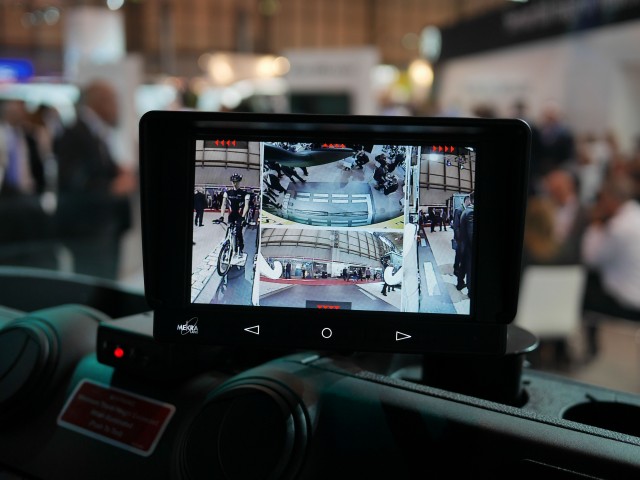
Camera monitoring systems
Camera monitoring systems aim to completely eliminate or minimise the vehicle blind spots as far as is practical and possible.
FORS (Silver Level) and TfL's HGV Safety Permit require a nearside blind spot camera view, however cameras can be used to give a 360 degree view around an HGV.
In addition cameras can be used as mirror replacements with the advantages including that the visual display can be within the cab and thus protected from poor weather, that the camera image can be enhanced to cope with poor light conditions, and the field of vision and level of zoom can be controlled by the driver.
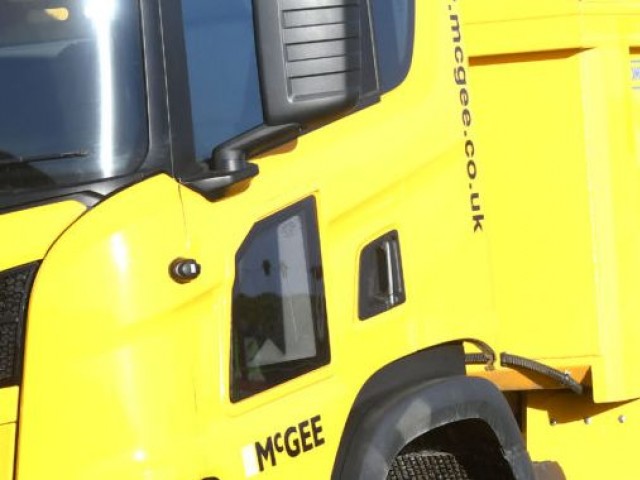
Door vision panels
These increase the space that the driver can see directly on the near side of the cab. These can be retro fitted but several manufacturers now offer them as an option on new vehicles.




